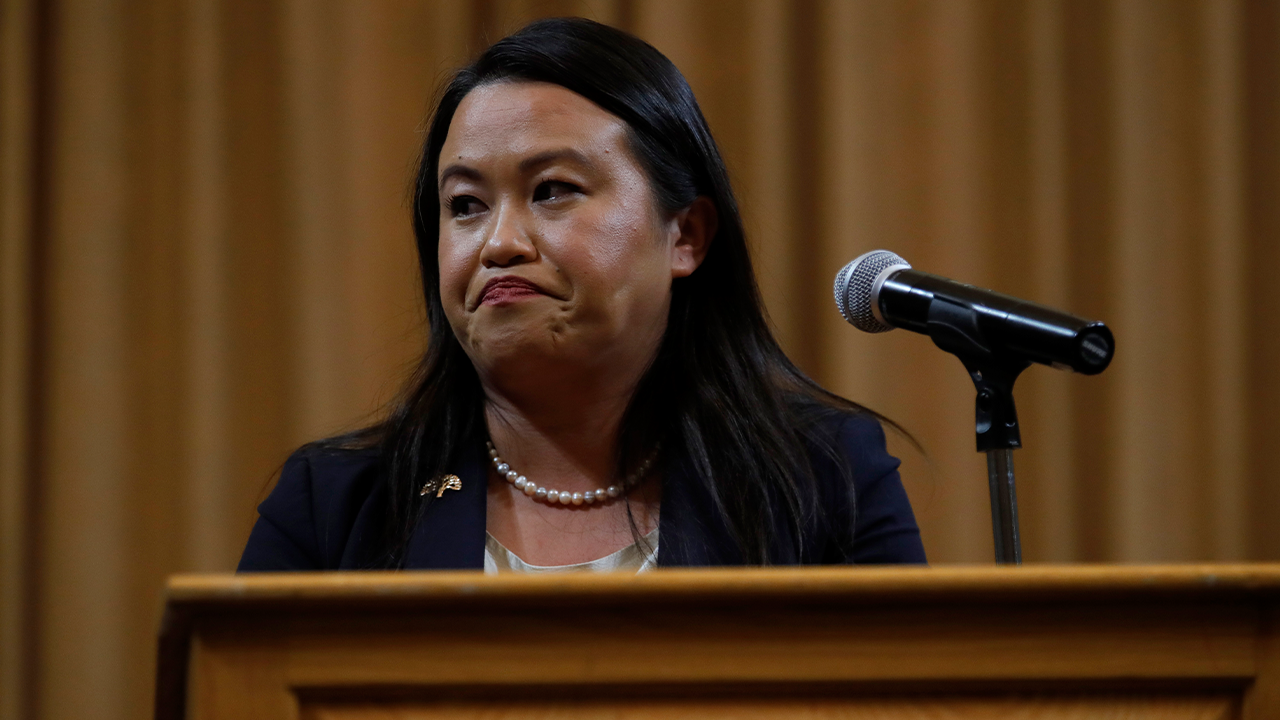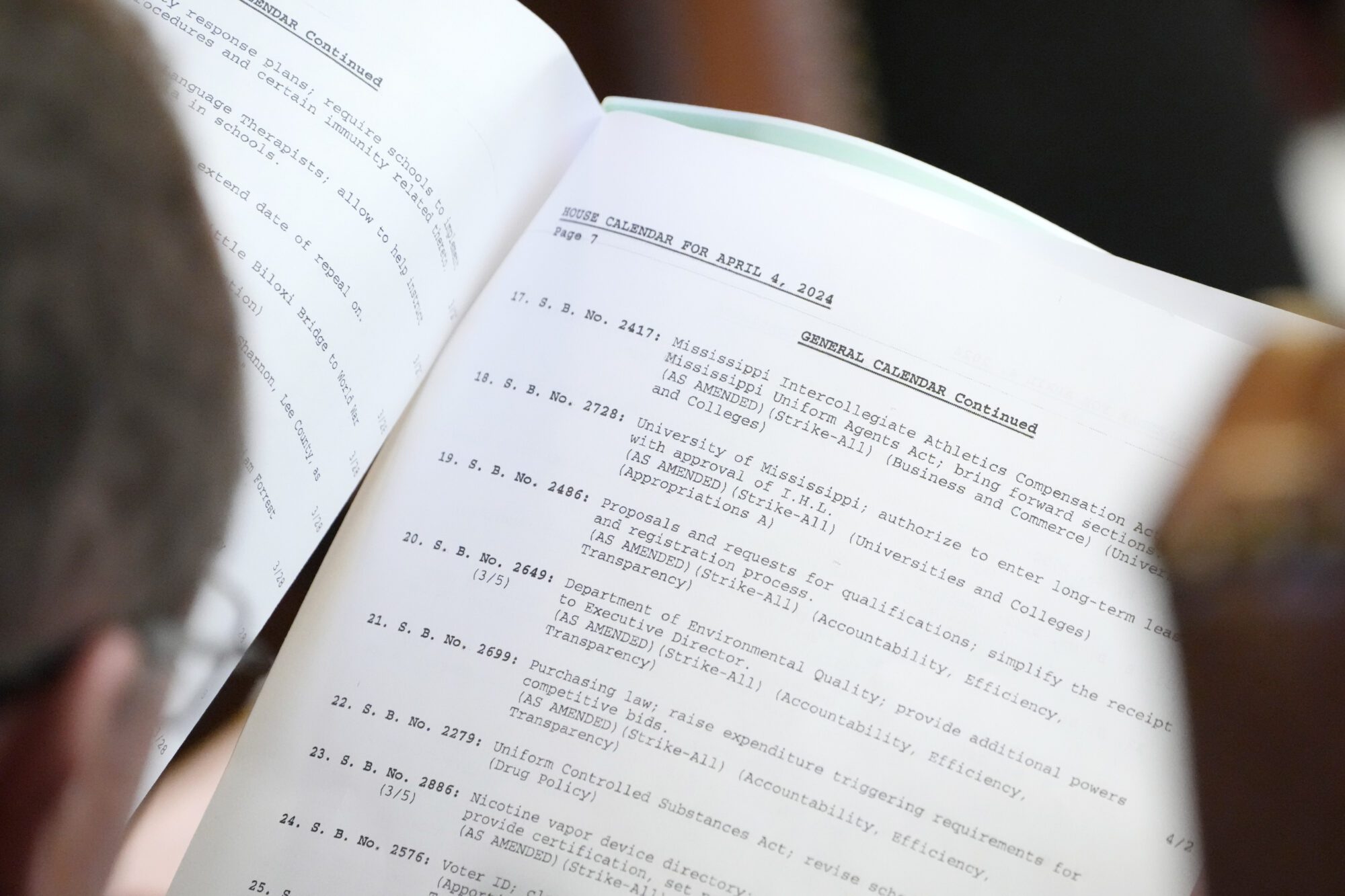Montana
Victims say Montana’s lax DUI laws keep justice forever out of reach

When Jessie Hanson wants to spend time with her daughter, she sets up a lawn chair at the intersection of Tamarack Lane and 12th Street in Columbia Falls.
A white cross marks the crossroads, flowers covering the ground beneath it. In a mason jar affixed to the front of the cross an electric candle illuminates a photograph of Brooke Hanson. A bracelet, made of fishing swivels and once worn by the teenager’s father, hangs on an arm.
“There is not a word strong enough to describe what this is,” Jessie said, sitting next to Brooke’s cross. “Emotional grieving never ends.”
This is the place where Brooke was walking with friends to go fishing in May 2021. It is the place where Jessica Farbstein was driving drunk that same night. It is the place where 15-year-old Brooke took her last breaths after Farbstein struck her and drove off.
“People need to be held responsible,” Jessie said.
Montana is above the national average for alcohol impaired driving deaths, according to the Centers for Disease Control and Prevention. The state has one of the highest fatality rates in the nation for drunk driving deaths. Around 66% of all fatalities on the road were the result of impaired driving in 2020, a number that has increased.
Despite the statistics, Montana boasts some of the most lax drunk driving laws in the country, and there is little to no effort to change that.
“It is one of the, if not the most, preventable crimes in the country,” said Ed Corrigan, former Flathead County Attorney. “But there doesn’t seem to be a way to put a complete end to it.”
Under Montana’s state code, the penalty for driving under the influence for someone’s first, second and third offenses is a misdemeanor, paired with a short amount of imprisonment, ranging from 24 hours to one year depending on the number of prior offenses and the severity of the infraction, with a fine ranging from $600 to $5,000.
It takes someone getting four DUIs before it becomes a felony. Sometimes it can take repeat offenders five, six, seven offenses before they face a felony charge, according to Flathead County Sheriff Brian Heino. Occasionally, impaired drivers receive only a careless driving ticket or deferred sentence for earlier offenses rather than a DUI charge.
Montana has done little to reduce drunk driving, starting on the first offense, since the enactment of a .08 blood alcohol content per se law in 2003. Compared to other states, Montana lags behind.
“We know Montana has always worn the badge for being the worst state for drunk driving laws and fatalities for quite some time,” said Dennis Maughan, the Pacific Northwest regional executive director of Moms Against Drunk Driving, a national advocacy group.
For example, Montana doesn’t have interlock device laws for all offenders. There are no sobriety checkpoints, no automatic license revocation and no refusal laws.
“It’s not pretty, and I guess that’s the will of the people if you want to call it that,” Maughan said regarding the lack of legislative action.
Maughan offered a few suggestions that could lead to change. A citizens initiative could get possible initiatives on the ballot, since attempts in the state Legislature continue to fail.
Seven bills were introduced in the 2023 legislative session with DUI in their title. One, House Bill 404, looked to increase penalties for first, second and third offenses. The legislation was sponsored by Rep. Terry Falk, R-Kalispell. It was tabled in committee.
Opponents argued that an increase in jail time penalty for a first offense DUI could lead to fewer convictions.
Brian Thompson, a representative of the Montana County Attorneys Association, said in the committee hearing that 70% of people who have a DUI do not reoffend. Therefore, harsher punishments should be reserved for repeat offenders. He suggested increasing financial penalties while leaving jail time alone.
Great Falls Republican Rep. Scott Kerns even brought a bill forward this past session that would allow for expungement of an offense after his own 2022 conviction. The legislation made it to the Senate before it was voted down.
Moms Against Drunk Driving opposed one piece of Montana legislation that passed this session. Signed into law by Gov. Greg Gianforte, the bill reduces the monetary damages a bar can receive for overserving a patron.
Senate Bill 107, sponsored by Republican Senate Majority Leader Steve Fitzpatrick of Great Falls, was signed into law on May 1.
The bill was backed by Montana bars and alcohol merchants. It curtails the ability of the families of victims in drunk driving wrecks to sue bars for overserving.
Supporters included the Liquor Store Owners Association of Montana, Montana Brewers Association, National Association of Insurance and Financial Advisors and the Gaming Industry Association of Montana.
Maughan finds Montana’s approach to drunk driving curious. Maybe it is because of demographics, social norms, or the perception that Montanans cherish their freedom, he said.
“Freedom’s a wonderful thing until you’ve impacted and infringed on the rights of somebody else to live their lives,” he said.
Moms Against Drunk Driving has attempted to address drunk driving in the state in other ways. In Gallatin County, the group runs a victim impact panel. Motorists convicted of a DUI are court ordered to meet with the panel, which lets victims speak directly to the offender.
Gallatin County, with a population of roughly 123,000, saw 388 drunk driving arrests by Montana Highway Patrol in 2022. With a population of 108,000, Flathead County saw 312. This year, to date, there have been 292 arrests in Gallatin County and 193 in Flathead.
Sheriff Brian Heino has observed an increase in drunk driving arrests over his over 20-year career. Flathead County in particular has one of the highest DUI fatality rates in the state.
From 2011 to 2020, Flathead County has the highest percentage of impaired drivers involved in crashes, according to the Montana Department of Transportation. Approximately 12.5% of all crashes involve impaired drivers in Flathead County, the second being 9.7% of all crashes in Gallatin County.
For fatal and serious injury crashes, 9.2% are from drunk drivers in Flathead County, followed by 6.2% in Yellowstone County.
The Sheriff’s Office mainly deals with the drunk driving cases that result in death; Montana Highway Patrol handles most of the arrests. There are a few reasons why drunk driving numbers have increased, Heino said, a major one being that roads in the Flathead are ever more heavily trafficked.
“Impairment levels really affect the kinds of crashes we see,” he said.
If it had the manpower, Heino said that the Sheriff’s Office might create a division focused on DUIs. The need is there.
Despite the increase in drunk driving statistics, Heino sees reason for hope. He believes society’s view of drinking and driving is changing,
“The perspective of a DUI was probably pretty much accepted on some levels [in the past] and we’re kind of seeing that transition to the idea that any sort of alcohol impairment can affect people’s lives,” Heino said.
Maughan is less optimistic.
There are 80 estimated trips taken by a drunk driver for every one DUI, according to Maughan, meaning that many offenders drive impaired frequently before getting caught. Nationwide, there has been a double digit increase in DUI arrests since 2019, he said.
“We’re going the wrong way,” Maughan said of the nation.
There are some states that are going in the right direction, he said, using Arizona as an example. Fines have increased in that state and offenders are required to undergo treatment, utilize an ignition interlock device and perform community service.
Montana often scores highly on rankings of the states with lax drunk driving laws. Intoxalock, which manufactures ignition interlock devices, lists it alongside Wyoming and the Dakotas as boasting some of the weakest laws in the nation. Michigan and Rhode Island also earn low marks by national advocacy groups. Mothers Against Drunk Driving gives Montana a half star rating for its efforts on drunk driving.
“It’s not an easy train to turn around,” said Frank Garner, a former Kalispell Police Chief and Republican legislator.
Garner said that while multiple agencies independently work to mitigate drunk driving, there is no multidisciplinary effort to address it. Garner sees the need for a strategic plan that puts law enforcement, legislators, mental health experts, judges and others at the same table.
Similar to the commission that was granted $300 million this past session to reform the state’s mental health system, Montana needs oversight, bipartisan efforts and a multidisciplinary approach to fix the issue of impaired driving.
“It’s multigenerational, it’s multicultural, there’s just not one place you can push and completely change the dynamic. It is complicated and the solution looks more like an algorithm than it does a straight line,” Garner said.
Victims in Montana argue that even when punishments are meted out in accordance to the law, the penalties fall short. Madelyn Janetski, who was struck by a drunk driver near the intersection of North Somers Road and Montana 82 last year, is among them.
“The whole mentality around it is so lax that it’s not even really a big deal. People are just like, ‘Oh, it’s a DUI, whatever.’ But I don’t consider human life not a big deal,” Janetski said.
Janetski was walking her dog in April 2022 when she was struck by then 21-year-old Gunnar Sweem. The crash left Janetski, 24 at the time, with a broken femur, neck and wrist bone, a lacerated liver and kidney, punctured lung and a concussion. Her dog died in the crash.
Sweem had at least six previous misdemeanors, including a per se driving under the influence charge. Judge Amy Eddy sentenced him to 10 years with the state Department of Corrections in December of that year, with half of that time suspended.
Gunnar Sweem is already out of prison, serving his suspended sentence at home on a conditional release, according to the Montana Department of Corrections. He served less than eight months.
“In my situation, there’s always going to be the Gunnar Sweem out there. There’s always going to be that guy,” Janetski said. “But when the rules are strict and pointed and there’s a consequence to that on your life, change could happen.”
Ed Hirsch, the Montana Attorney General’s traffic safety resource prosecutor with the prosecution services bureau, noted that punishments vary substantially between counties as local authorities handle cases differently. Attorneys and judges decide what the sentence will be for the crime.
Janetski lives with Sweem’s choice to drive drunk, although the decision itself had nothing to do with her at all, she said. Victims are often forced to cope with injury and trauma, pay medical bills and grieve while the perpetrator seemingly “gets off easy,” she said.
Janetski’s mother, Kat Kingery, has become outspoken about the need for harsher punishments for impaired driving. Kingery previously ran Alpenglow Clinic in Kalispell, a state-certified dependency and mental health clinic. In the aftermath of the crash, Kingery has decided to step away from addiction care.
“They have to make [the punishments] so miserable that they don’t want to even cross the line,” she said. “At the end of the day, these deaths are on the so-called justice system of this Flathead County.”
Jessie Hanson is also discontent.
Jessica Farbstein, who killed her daughter, earned a 30-year sentence with 15 years suspended. Realistically, however, Farbstein likely will serve around four years in prison before getting parole, due to state statute. Offenders are eligible for parole after serving a fourth of their sentence.
“She’s going to do less than five years for absolutely ruining our lives,” Jessie said. “That is not justice. Nothing will feel like justice now.”
She also noted that it’s difficult to understand how serious the situation is until it happens to someone themselves. She said she believes real change won’t come until someone important loses a child.
Mike Hanson spends a lot of time on the Flathead County Jail roster website. It isn’t abnormal to see multiple DUI arrests. Everytime a drunk driver causes a tragedy, it rips the scab off of a wound that hasn’t healed.
“I’m going to spend the rest of my life trying to discover happiness again because I died on May 20, 2021 with my daughter,” he said.
He is angry, he said, looking at the inaction of the state and county. The death of a child should enrage people, he said.
Just this summer, a 21-year-old mother died and her 4-year-old was sent to the hospital with serious injuries after an alleged 15-year-old drunk driver hit her car.
“This county and this state turn a blind eye when it comes to drinking and driving,” Mike Hanson said. “The streets are painted with the blood of innocent victims, of innocent kids. They are nothing but the purveyors of death around here.”
The community should be outraged, Mike Hanson said, but he thinks people care more about drinking than about the civilian casualties that can result from it.
“You’re left alone,” he said. “My entire family is struggling and alone.”
The grief, anger and pain of these tragedies sticks with these families forever, Maughan said. There is a massive cost, both economically and emotionally, associated with these crimes
“This is very personal because it follows people for the rest of their lives,” he said.
If efforts to change the laws remain stalled, so does life for the Hanson family. Brooke Hanson’s room sits just as she left it, with a bag packed to go to her friend’s house. Her mom hasn’t touched it, hoping that the memory of Brooke’s life would help her heal.
“I’m just trying to survive now,” Jessie Hanson said. “The consequences do not outweigh the risk right now for DUIs and that needs to change.”
Reporter Kate Heston can be reached at kheston@dailyinterlake.com or 758-4459.
Support local journalism — subscribe to the Daily Inter Lake today.

Montana
Blues Traveler/JJ Grey & Mofro an Insanely Good Match for Montana

The Kettlehouse Amphitheater will be rockin’ with the most perfect co-headlining show on July 9th. This is the kind of rockin’ show, packed with songs you know, that creates the kind of Montana live show memories that last forever.
- WHO: Blues Traveler and JJ Grey & Mofro (co-headlining tour)
- GENRE OF MUSIC: Pop, Rock, Blues, Jam
- HOMETOWN: Princeton, NJ | Jacksonville, FL
- WHERE: KettleHouse Amphitheater (605 Coldsmoke Lane, Bonner MT)
- WHEN: Tuesday, July 9th, 2024
- TIME: Doors 6:00pm // Show 7:00pm
- TICKETS: General Admission standing pit tickets, reserved stadium seating tickets, and general admission lawn tickets are available for this show. (Link and ticket prices are below.)
“Blues Traveler continue to resonate as loudly as ever among audiences nearly four decades since their emergence. It’s why their catalog endures, comprising three gold-selling records, one platinum LP, and the 6x-platinum opus Four highlighted by the GRAMMY® Award-winning “Run Around.” It’s why they can still roll through any town on tour and pack a shed or amphitheater. It’s why they even notched their most recent GRAMMY® nod in 2022.”
$55.00 General Admission Pit (subject to fees) | General admission pit tickets allow access to the standing room only section located directly in front of the stage.
$45.00 – $65.00 Reserved Stadium Seating (subject to fees) | Reserved Stadium Seating tickets allow access to the reserved, stadium style seating section located just behind the main pit of the amphitheater.
$37.00 General Admission Lawn (subject to fees) | General Admission Lawn tickets allow access to the upper standing section of the amphitheater located just above the reserved stadium seating section.
All concerts are held rain or shine. Be prepared for extremes such as sunshine, heat, wind or rain. All tickets are non-refundable for the Kettlehouse Amphitheater. This is an all ages show (as are most shows at the Kettlehouse.)
BUY TICKETS FOR BLUES TRAVELER AND JJ GREY & MOFRO HERE
TRAVEL: How To Enjoy Beautiful Seattle On A Budget
Gallery Credit: mwolfe
These 8 Montana Restaurants Make Excellent Fish Tacos
Gallery Credit: mwolfe
Montana
University of Montana graduate students from new union, one of largest in state • Daily Montanan

Graduate students at the University of Montana in Missoula have formed a union after two years of organizing, and with more than 400 eligible members, it will be one of the largest in the state.
The Department of Labor and Industry certified the UM Graduate Employees Union last week, according to the Montana Federation of Public Employees.
“Our organizing message was simple,” said Colette Berg, an organizing lead and UM graduate employee, in a statement from MFPE. “Graduate employees’ wages, benefits, and working conditions aren’t keeping up with Missoula’s cost of living or honoring our roles in research, teaching, and learning. Everyone realizes we’re a lynchpin for UM, and we look forward to bargaining collectively with UM’s leadership to collaboratively address the challenges GEU members face.”
The labor movement has been active in the U.S. in recent years, including in Missoula, where the cost of housing has far outpaced wages. However, the proportion of workers who belong to a union has generally declined in the country during the last couple of decades.
Graduate students are especially difficult to organize because they are spread across a campus and work on different contracts that can range from two to five years, according to the Montana Federation of Public Employees.
According to the Montana State University Graduate Employee Organization in Bozeman, they’re also not easy to sustain. The Graduate Employee Organization counts 169 members.
MSU Graduate Employee Organization President M Wittkop said a graduate student union has challenges that are different from other locals. That’s because a campus union is made up of students — whose members by definition are constantly graduating and moving on.
MSU graduates formed their student union in 2015, according to the Office of the Commissioner of Higher Education. Bozeman also has notoriously high housing costs.
A report from an April 2024 graduate union assembly in Bozeman said the local will need new members in order to avoid dissolution. However, Wittkop also said the union has driven significant wins for its members, including in 2023.
“We got one of the biggest raises across the board for all graduates,” Wittkop said.
The increase amounts to roughly $100 more a month for the minimum allowable stipend a graduate student can be paid, or currently $760 a month, they said. The minimum will go up another $100 on Aug. 1.
“We also put in more strict limits on how many classes a TA (teaching assistant) can be assigned and changed language around work environment to protect students against ‘PI abuse,’” Wittkop said.
(That’s the potential abuse of power a thesis advisor or PI, a principal investigator, might enact over a student, they said.)
The graduate union also completed a cost of living survey, which among other things, showed 45% of respondents had skipped “necessary medical care” to save money, and 46% had skipped meals or eaten less to save money.
Additionally, the survey found 57% of graduate students needed second jobs, such as pet sitting, while in school. Of 826 graduate assistants, 184 responded to the 2024 survey, according to the union.
Wittkop said they believe the union has the potential for longevity if it can find new members, but the current challenge is broadcasting its existence.
“We’re going to have to really put in the work to find these people,” Wittkop said.
The Montana University System already counts 23 collective bargaining agreements covering roughly 2,374 people of an estimated 9,000 total employees, according to the Office of the Commissioner of Higher Education. That doesn’t include the new union at UM.
Faculty at the Bozeman campus formed a union that was approved in 2011 but then decertified in April 2013, according to the Commissioner’s Office.
At UM, a faculty union and classified staff union have long been active, and MFPE President Amanda Curtis said the organization looks forward to supporting the new graduate student union as well. Berg could not be reached for additional comment.
“We are so proud of the graduate employees at UM who have now organized and certified Montana’s largest new union in years,” Curtis said in a statement. “Their commitment to ensuring graduate employees have a strong voice in their working conditions and wages is what unionism is all about.”
A couple of years ago, the Missoula Tenants Union formed in the Garden City, and nurses at Providence St. Patrick Hospital recently — and visibly — renegotiated their contract; signs advocating support for the nurses popped up across the community.
The Montana Federation of Public Employees said collective bargaining at UM has been marked by a respectful and fair relationship between union members and university leadership for decades.
In an email, UM spokesperson Dave Kuntz said the university worked with the Department of Labor and Industry and the Commissioner’s Office throughout the process — clearly defined in statute — with graduate students.
“Graduate students are critical to UM,” Kuntz said in an email. “Their scholarship, research, and teaching help to advance our entire state and address many of the most pressing issues facing society.”
The labor movement has been historically strong in Montana. Last year, roughly 13% of workers were represented by a union compared to roughly 10% of those in the U.S., according to U.S. Bureau of Labor Statistics.
The news release from Montana Federation of Public Employees said the state certified the new Graduate Employees Union at UM on June 25, and it is MFPE’s newest local with “full collective bargaining rights to secure a fair contract.”
Montana
Top stories from today's Montana This Morning, July 3, 2024

Top stories from today’s Montana This Morning, Wednesday, July 3, 2024 – Latest local news and headlines from across the world.
TRENDING VIDEOS:
Busy mom: Five cubs in Yellowstone National Park
YNP Five cubs
Biden meets with Democratic governors amid post-debate anxiety
Biden meets with Democratic governors amid post-debate anxiety
How Trump works with the RNC to fit his MAGA agenda
How Trump has molded the RNC to fit his MAGA agenda
Visiting state lands on the 4th? Here’s what you need to know before you celebrate
Visiting state lands for the 4th of July? Here are some simple rules to remember
Gas prices lower this July 4th
Gas prices lower this July 4
-

 Politics1 week ago
Politics1 week agoBiden official says past social media posts don’t reflect ‘current views,’ vows to support admin ‘agenda’
-

 Politics1 week ago
Politics1 week agoSupreme Court to review Tennessee ban of puberty blockers, transgender surgery for minors
-
/cdn.vox-cdn.com/uploads/chorus_asset/file/25500699/DSCF7644.jpg)
/cdn.vox-cdn.com/uploads/chorus_asset/file/25500699/DSCF7644.jpg) Technology1 week ago
Technology1 week agoHow Apple is trying to make Final Cut Pro a “touch-first” video editing app
-

 News1 week ago
News1 week agoSupreme Court to decide whether states can restrict gender-affirming care for minors | CNN Politics
-

 World1 week ago
World1 week agoFar-right politician back in German court over use of Nazi slogan
-

 Politics1 week ago
Politics1 week agoOakland mayor breaks silence after FBI raid: ‘I have done nothing wrong’
-

 News1 week ago
News1 week agoWhere Joe Biden and Donald Trump Stand on the Issues
-

 Politics1 week ago
Politics1 week agoPopular Republican and Trump running mate contender makes first Senate endorsement in 2024 races



















